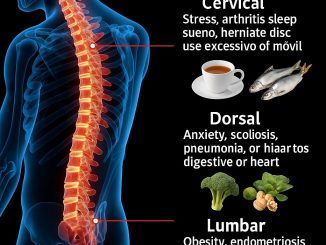Iron deficiency is one of the most prevalent nutritional disorders, impacting millions globally. This condition arises when the body lacks adequate iron to produce hemoglobin, the protein in red blood cells responsible for transporting oxygen throughout the body. While the symptoms can progress to more severe issues, recognizing the first sign is crucial to addressing the problem early and preventing complications. So, what is the first sign of iron deficiency, and what steps can you take to combat it? Let’s dive in.
Why Iron is Essential for Your Body

Iron is not just a mineral—it’s the lifeblood of numerous bodily processes. It’s the key ingredient in hemoglobin, enabling red blood cells to carry oxygen from your lungs to the rest of your body. Think of hemoglobin as the courier service for oxygen, and iron as the fuel that powers it. Beyond this, iron supports energy production, a robust immune system, and the synthesis of essential hormones. When your iron levels dip, these systems can go haywire, leaving you fatigued and vulnerable to a host of health problems.
Common Causes of Iron Deficiency
Iron deficiency doesn’t just happen overnight—it’s often the result of a combination of factors. Here are some of the most common culprits:
- Inadequate Dietary Intake: Not consuming enough iron-rich foods like red meat, poultry, or leafy greens.
- Poor Absorption: Conditions like celiac disease or certain medications can impair your body’s ability to absorb iron.
- Increased Needs: Pregnancy, growth spurts in children, and heavy exercise can increase your iron requirements.
- Chronic Blood Loss: Heavy menstruation, gastrointestinal bleeding, or regular blood donation can deplete your iron reserves.
Understanding these causes can help you identify if you or someone you know is at risk.
The First Sign of Iron Deficiency: Fatigue
The earliest and most common sign of iron deficiency is fatigue. But this isn’t your run-of-the-mill tiredness after a long day. It’s the kind of exhaustion that makes you feel like you’ve run a marathon just by getting out of bed. Here’s why it happens: When your body doesn’t have enough iron, it can’t produce sufficient hemoglobin. Without enough hemoglobin, your tissues and organs receive less oxygen, making even simple tasks feel like monumental efforts.
If you find yourself constantly drained of energy—even after a full night’s sleep—it’s time to take a closer look at your iron levels.
Accompanying Symptoms to Watch Out For
While fatigue is the first red flag, iron deficiency often comes with a host of other symptoms as it progresses. Be on the lookout for:
- Pale Skin: A lack of hemoglobin can make your skin lose its healthy glow.
- Shortness of Breath: Climbing stairs or light exercise might leave you gasping for air.
- Dizziness and Headaches: Your brain also needs oxygen, and its lack can cause these symptoms.
- Brittle Nails and Hair Loss: Your nails may chip easily, and you might notice more hair in your brush.
- Pica: An unusual craving for non-food items like ice, dirt, or chalk.
These symptoms can vary in severity, but their presence signals that it’s time to take action.
Who is Most at Risk for Iron Deficiency?

Certain groups are more prone to developing iron deficiency. Are you one of them? Here are the most vulnerable populations:
- Women of Childbearing Age: Menstruation can lead to significant iron loss.
- Pregnant Women: Increased blood volume and fetal growth demand higher iron levels.
- Infants and Young Children: Rapid growth requires more iron than their diet often provides.
- Vegetarians and Vegans: Plant-based diets may lack easily absorbable forms of iron.
- People with Chronic Conditions: Diseases like Crohn’s or celiac can impair iron absorption.
If you belong to any of these groups, it’s especially important to monitor your iron intake and watch for early signs of deficiency.
How is Iron Deficiency Diagnosed?
If you suspect iron deficiency, don’t play the guessing game—seek a proper diagnosis. Doctors usually perform the following tests:
- Complete Blood Count (CBC): To check hemoglobin and red blood cell levels.
- Serum Ferritin Test: Measures the body’s iron stores.
- Transferrin Saturation Test: Evaluates how much iron is being transported in the blood.
These tests provide a comprehensive picture of your iron levels and help guide appropriate treatment.
Preventing Iron Deficiency: Nutrition is Key

Prevention starts on your plate. Incorporate iron-rich foods into your diet to keep your levels in check. Here are some top choices:
- Heme Iron Sources: Found in animal products like red meat, chicken, turkey, and fish.
- Non-Heme Iron Sources: Found in plant-based foods like lentils, beans, tofu, and spinach.
- Iron-Fortified Foods: Cereals and grains often come fortified with iron.
Pair these with vitamin C-rich foods like oranges, strawberries, or bell peppers to boost iron absorption. If dietary changes aren’t enough, consult a doctor about iron supplements.
Effective Treatments for Iron Deficiency
If you’ve already developed iron deficiency, don’t worry—there are effective treatments. These may include:
- Iron Supplements: Typically prescribed as tablets or capsules.
- Intravenous Iron Therapy: For severe cases where oral supplements aren’t effective.
- Dietary Adjustments: A tailored meal plan to replenish iron levels naturally.
Always follow your healthcare provider’s advice to ensure safe and effective treatment.
When to See a Doctor

If you’re experiencing persistent fatigue, pale skin, or other symptoms mentioned earlier, it’s time to seek professional advice. Early intervention can make all the difference, preventing more severe complications like anemia or organ dysfunction.
Conclusion: Why Early Detection Matters
Catching iron deficiency in its early stages can save you from a cascade of health issues. Fatigue, the first and most telling sign, is your body’s way of waving a red flag. Don’t ignore it. By understanding the risk factors, recognizing the symptoms, and making necessary dietary and lifestyle changes, you can maintain healthy iron levels and live your life to the fullest.
Take charge of your health today—because you deserve to feel your best every day!


